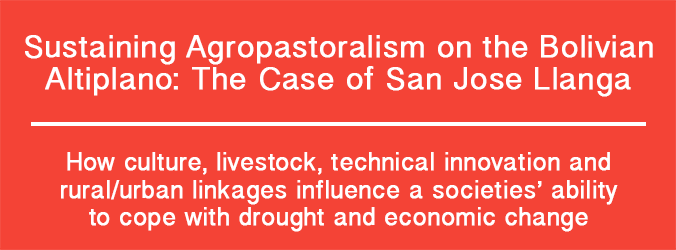
Files
Download Full Text (11.7 MB)
Description
This chapter has several main purposes. One is to provide a contemporary image of the peasant production system at San José Llanga (SJL) from 1992 to 1995, the years of our field research. Another purpose is to provide a framework of the historical processes that have influenced local society in this century. We wanted to know about standards of living, diets and food security, income and expenditure patterns, gender roles and aspirations of the people. We wanted to know about population dynamics, community leadership, resource tenure and off-farm activities. We wanted information on the types of crops and livestock produced and the contributions that different commodities made to household economies and market integration. This empirical information would be used to answer questions of practical and theoretical merit. First, what was the trajectory of the community in broad social and economic terms (i.e., positive, negative or neutral)? In other words, is there reason for concern in terms of living standards, food security and prospects for economic growth? Second, what was the mixture of market versus non-market factors in the production system, and how do these contribute to human welfare? How have new technologies contributed to improving human welfare? Are new technologies replacing old technologies, or have they been combined in novel ways?
Publication Date
2001
Recommended Citation
Valdivia, Corinne; Jetté, Christian; Markowitz, Lisa; Céspedes, Jorge; de Queiroz, João S.; Quiroga, Carmen Murillo; and Dunn, Elizabeth, "Chapter 04: Household Economy and Community Dynamics at San José Llanga" (2001). Sustaining Agropastoralism on the Bolivian Altiplano: The Case of San José Llanga. 7.
https://digitalcommons.usu.edu/sustaining_agropastoralism/7


